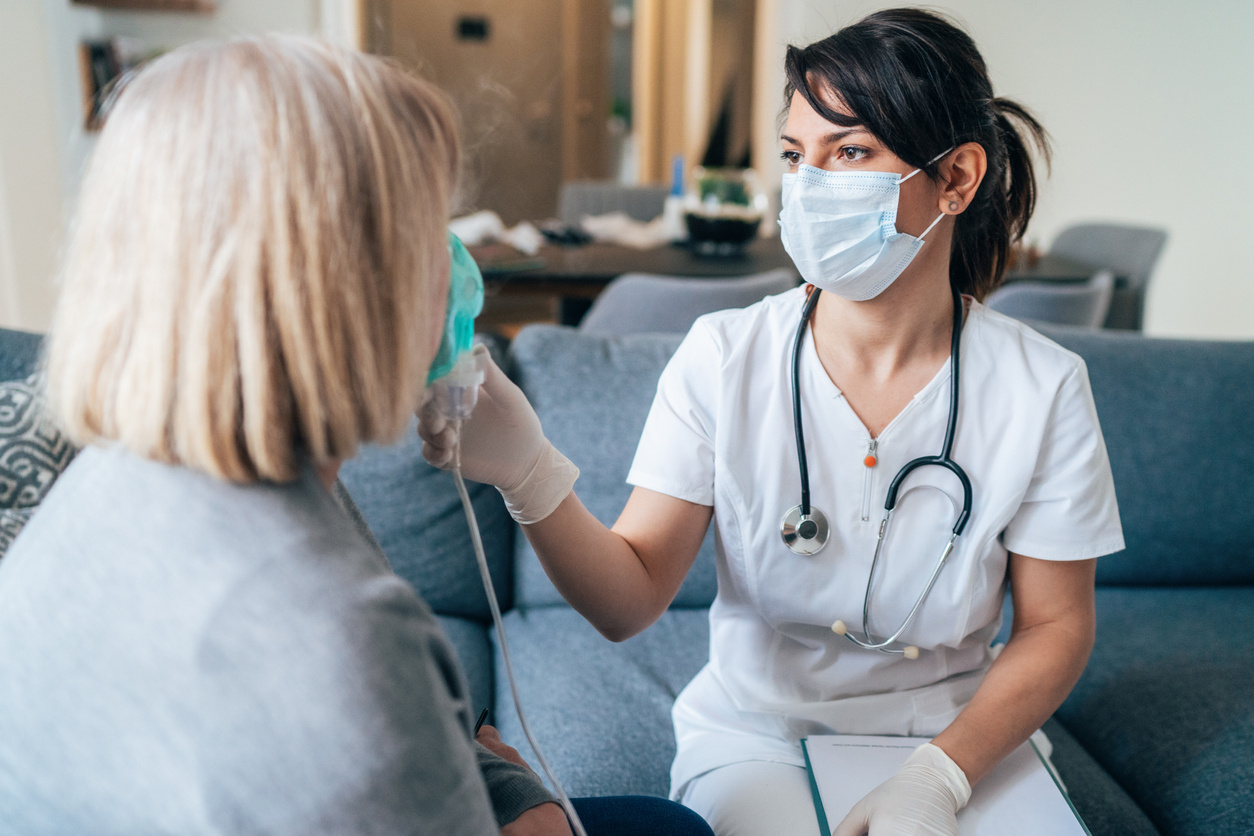With millions of elderly Americans depending on accurate and compassionate care in nursing homes, controlling infections has become a vital part of the senior care landscape. Many nursing home residents are considered at high risk of contracting infectious diseases, and these infections can cause severe health complications or even death. Because infectious pathogens represent a significant potential cause of harm, nursing home staff and managers must adopt rigorous approaches to combating the spread of these harmful organisms. Coupled with risk management strategies that include nursing home insurance, infection control in long-term care facilities helps protect residents, staff, and visitors from harm.
Infections in Nursing Homes: Facts and Statistics
Residents of long-term care facilities like nursing homes and skilled care facilities experience high numbers of infections each year. According to the U.S. Centers for Disease Control and Prevention (CDC), it is estimated that between one and three million serious infections occur each year. In a study published in Aging Health in 2011, researchers noted that within the estimated 1.5 million residents of nursing homes, the annual average of infections exceeds two million. This disparity in numbers suggests that some residents may experience more than one severe infection in a given year. As a cause of harm, infections are closely associated with high morbidity and mortality rates as well as skyrocketing costs associated with infection control and treatment.
Common Infection Risks in Nursing Homes
Infections in healthcare facilities like nursing homes can take several forms, and emerging infection vectors continue to present substantial challenges to healthcare professionals. Common nursing home infections include:
- Urinary tract infections (UTIs) arising from catheter use
- Aspiration pneumonia from feeding tube use
- Respiratory tract infections
- Localized skin and soft tissue infections
- Influenza
- Novel Coronavirus (SARS-CoV-2), the pathogen behind COVID-19
- Antibiotic-resistant organisms
It is important to note that not all infections are fatal; some common infection types are relatively easily treated and produce few, if any, long-lasting health effects. However, because elderly nursing home residents are at high risk of developing severe or fatal complications, preventing infections in the first place should take priority among caregivers and facility managers.
Infection Control: Best Practices to Reduce Cause of Harm Issues in Nursing Homes
Regulatory agencies like the CDC and the Centers for Medicare and Medicaid Services (CMS) have addressed the growing concerns about infectious disease spread in nursing homes and other long-term care facilities. By 2030, an estimated 3-5 million people will rely on these care facilities, so facilities must take proactive approaches to prevent infections.
The first step in any infection control practice is identifying potential pathogens and their transmission vectors, or the factors that lead to the spread of harmful pathogens. In many nursing homes, close proximity of residents and shared facilities such as dining rooms, social areas, and transportation options is a recipe for spreading infectious diseases.
Once infectious causes of harm are identified, appropriate use of disease-mitigation practices are the next step in preventing spread. For caregivers, standard precautions include:
- Frequent handwashing or hand-sanitizing practices
- Selection and use of personal protective equipment (PPE) such as gloves, gowns, masks
- Safe injection and device-placement practices
- Adoption of single-use medical devices and their proper disposal when used
Facility maintenance personnel should be directed to adopt environmental cleaning and disinfection protocols, paying particular attention to treatment areas, food preparation areas, common rooms, and high-touch surfaces. Keeping facilities clean goes a long way toward reducing the chances of a pathogen spreading to residents.
Staff training is an integral part of infection control. This must be an ongoing practice in nursing homes, as emerging infections may necessitate new or revised control measures. Regular staff training in identifying and treating common or emerging infections should be part of every nursing home operation. Providing residents and family members with basic education on infections and how to prevent their spread has also been proven to reduce the chances of contracting a harmful or fatal disease.
Many nursing homes have infection preventionists on staff. These individuals are tasked with tracking residents for signs and symptoms of infections, monitoring the use of antibiotics, evaluating laboratory results, and implementing infection surveillance programs for facilities. By adopting practices that meet CDC guidelines for infection control, nursing homes can reduce a common cause of harm for residents, helping them to continue to lead healthy lives.
About Caitlin Morgan
Caitlin Morgan specializes in insuring assisted living facilities and nursing homes and can assist you in providing insurance and risk management services for this niche market. Give us a call to learn more about our programs at 877.226.1027.


